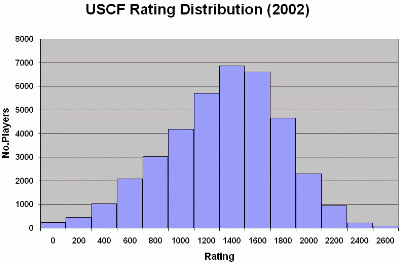I was sure I saw some graphs of this, hence they do exist, I just can't find them right now. Perhaps one needs a premium membership?
To your other point: I'm against all intervention in ratings. Different rating pools ---> different ratings, period. I'd rather have an accurate (with chess.com) rating of 354 or 9654, than something comparable with OTB federations, but with a 300 point margain of error due to interventions. They don't allow me to track my progress.











I am wondering what the deviation curve looks like regarding chess ratings, both at this site and at official (offline) chess federations. At this site I am wondering about both online (correspondence) and live chess.
Also, has anyone run enough (a representative sample) of games through a top computer engine to figure out what the curve might look like from an objective viewpoint? I realize complete objectivity is impossible here, but I would think that some reasonable measures could be deduced by comparing peoples moves to top moves as determined by a top level (2800+) rated engine.
I am thinking adjusting a sites ratings to this measure would be a good exercise in order to adjust for inflation or deflation of ratings as compared to other sites and/or federations, which would make comparisons of a persons ratings on different sites much fairer and useful for all involved. It would also be nice to compare the results to chess players historically, both at master and non-master levels.
Thanks in advance to all who repsond intelligently to this question.